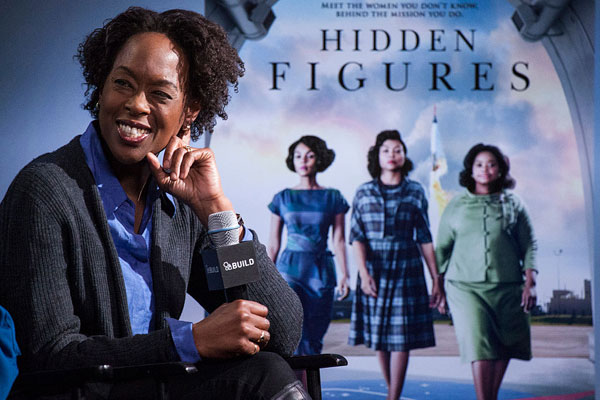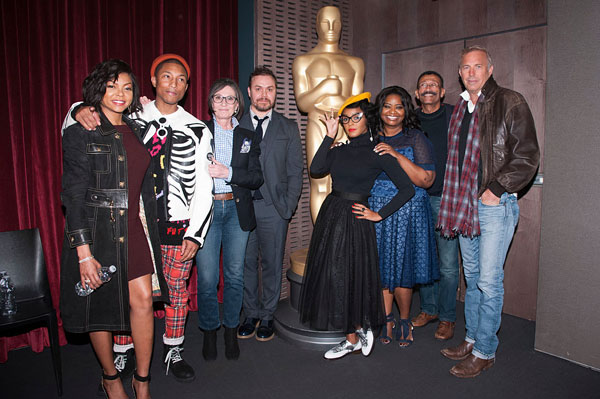Astronomy - The “Hidden Figures” Who Helped Win the Space Race
The movie Hidden Figures portrays the untold story of three African-American women who played an important role in the 1960s space race, and serves to inspire future generations.

Margot Lee Shetterly discusses her book, Hidden Figures, on which the movie is based.
Santiago Felipe / Getty Images
Santiago Felipe / Getty Images
Based on the book by the same name written by Margot Lee Shetterly, the movie Hidden Figures has a title with a triple meaning. It’s about the at-the-time obscure math that helped launch men into space and bring them safely back to Earth. It’s about the African-American women who performed those calculations in Langley, Virginia, without the same acknowledgement granted to astronauts such as Alan Shepard or John Glenn or even white engineers at the same institution. And it’s about those “human computers,” who were literally hidden from view in a segregated building on NASA’s campus.
In an era when Americans were losing the space race to the Russians, NASA needed the best possible people to help it catch up, regardless of the color of their skin. Hidden Figures celebrates the legacy of three African-American women who broke out of the West Area Computers building due to their talent.
One such woman is Katherine Johnson, played by Taraji P. Henson, an expert in analytical geometry who receives a promotion to a position in the Space Task Group. Director and co-writer Theodore Melfi highlights the kinds of petty, but no less serious, difficulties that these women had to overcome. He even makes a running joke of Johnson’s quarter-mile dashes across campus in high heels to use the colored women’s restroom. It takes awhile for her boss to realize the cause of her absences and put an end to the foolishness. Her colleagues’ respect comes even slower.
Yet, despite being underestimated and disrespected, Johnson and two of her colleagues — Mary Jackson, played by Janelle Monáe, NASA’s first black female engineer, and Dorothy Vaughan, played by Octavia Spencer, NASA’s first black supervisor and a mathematician who would later take over early IBM processing computers — make themselves indispensable to NASA.
Doing the Math
Calculating precise trajectories for a rocket or missile is complicated — especially when the atmosphere’s friction, heating on the vehicle, and many other variables that go into predicting where the capsule will land are taken into account. And if you change the mass or surface area of the capsule even by a tiny bit, you’ll have to calculate it all over again.
Each woman played an important role in helping win the space race. Johnson calculated the re-entry trajectories of Alan Shepard and John Glenn’s missions into space — Glenn even refused to fly unless Johnson verified computer’s numbers by hand. Jackson worked in a supersonic pressure tunnel simulating the capsule’s heated re-entry into Earth. And Vaughan was the stand-in supervisor for the colored computers, but then learned FORTRAN to program the new IBM computers.
Because the movie focused so much on the math, the creators hired a math consultant. Rudy Horne (Morehouse College), verified all calculations and trained the movie’s cast to write equations while on camera. He even made sure that the math scribbles in the background were at least relevant to the scene.
To ensure accuracy, both in history and technical detail of what human computers were doing at the time, the movie’s creators also consulted with NASA historians, IBM experts, and even spoke with Katherine Johnson herself.
Empowering Future Generations

The cast of the movie, Hidden Figures.
Kris Connor / Getty Images
Kris Connor / Getty Images
To me, as a woman of color with a background in astronomy who once aspired to work for NASA, Hidden Figures is as emotional as it is empowering. Watching these women face and overcome all sorts of sexist and racial barriers at times moved me to tears.
The struggles these women of color faced seemed especially pertinent to today’s racial discussion and will certainly inspire a future generation of minority female scientists. “I think Katherine Johnson said it best,” said Horne. “If you get even one little girl interested in math and science, then I think the movie accomplishes its goal.’”
No comments:
Post a Comment